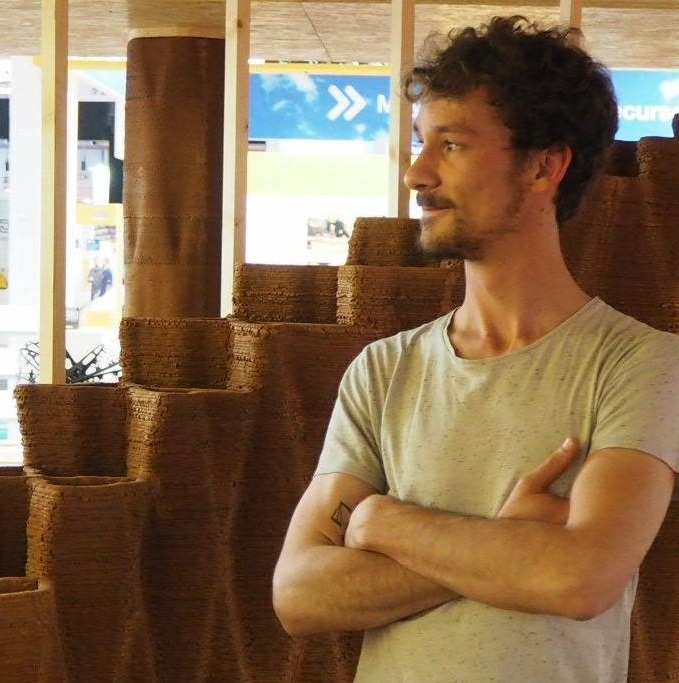Résumé de thèse
La recherche de doctorat se situe au sein du projet Fungal Architectures (EU H2020 FET), visant à développer un automate fongique à l’échelle architecturale. Concevoir un artefact qui soit informatiquement actif reposant sur un réseau mycelial nécessite que ce dernier soit maintenu en vie. A l’échelle architecturale, un tel ouvrage s'effondrerait rapidement sous l’action de la décomposition fongique. Afin de concilier le besoin d’intégrité structurelle pour un ouvrage architectural et le soin au champignon, il est nécessaire d’adapter autant les méthodologies constructives que l’intention architecturale et sa temporalité.
La thèse consiste à (1) décrire un système constructif, et (2) développer des règles de conception architecturale. Le premier champ de contribution comprend notamment l’établissement d’une taxonomie de substrats pour laquelle la composition doit être structurellement stable tout en promouvant l’établissement d’un milieu régénératif pour une souche fongique. Cette taxonomie est particulièrement développée autour d’une modélisation stochastique du comportement fongique. Le second champ de contribution s’intéresse à la structuration du pouvoir entre parties-prenantes plus-qu’humaines dans l’acte de synthèse architecturale, et explore les méthodes de médiation pour symétriser les intérêts humains et non-humains en jeu.
The Ph.D. research situates within the Fungal Architectures project (EU H2020 FET), which aims at developing a fungal automaton at the architectural scale. Designing an artefact that is computationally active relying on a mycelial network necessitates that the latter is kept alive. At the architectural scale, such a work would quickly collapse under the action of fungal decay. In an effort to conciliate the structural integrity requirement for an architectural work and the care of the fungus, it is necessary to adapt as much the constructive methodologies as the architectural intent and its temporality.
The thesis work consists in (1) describing a constructive system, and (2) developing architectural design rules. The first field of contribution comprises the establishment of a substrates taxonomy for which the composition must comply with the structural integrity, and that fosters the establishment of a regenerative milieu for a selected fungal strain. A specific focus is on stochastic mycelial behaviour simulation relying on the substrates taxonomy. The second field of contribution looks at the structuration of power between more-than-human stakeholders in the architectural synthesis method, and explores mediation methods for symmetricizing human and non-human interests at play.
Direction de thèse
- Phil Ayres, CITA, Royal Danish Academy.
